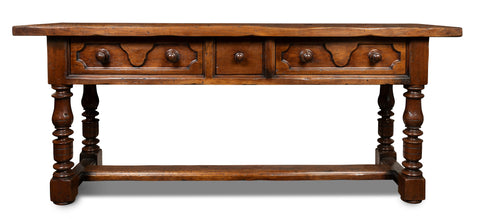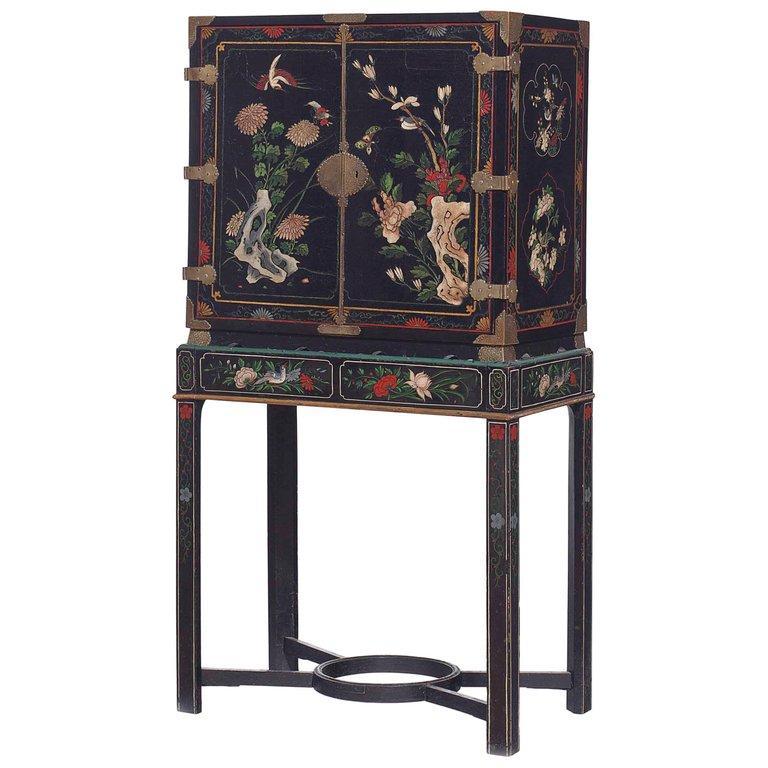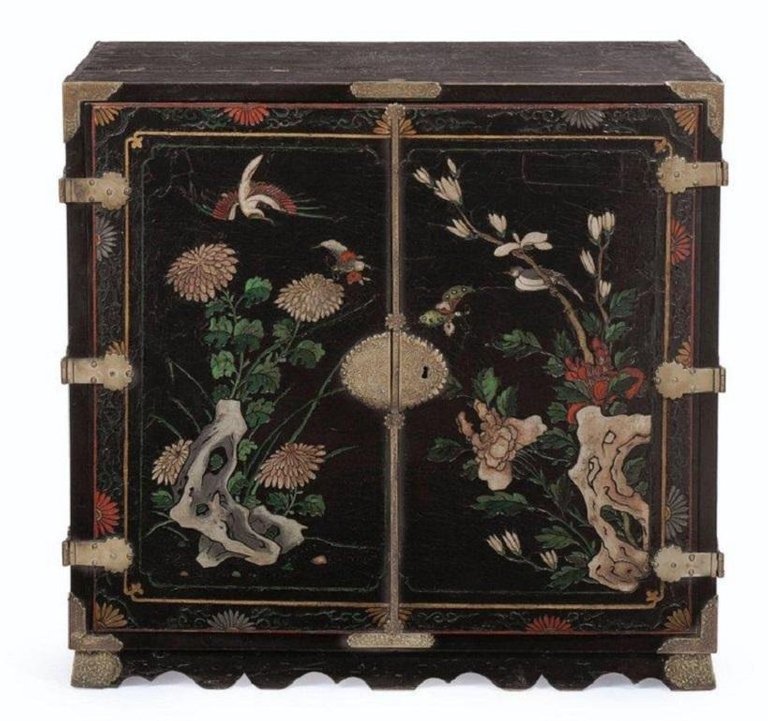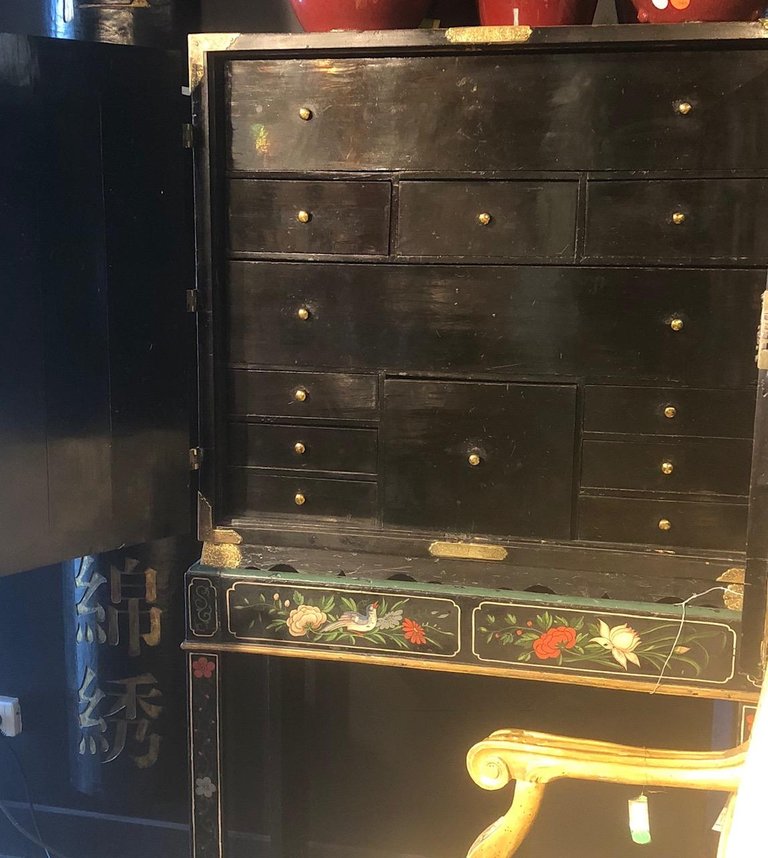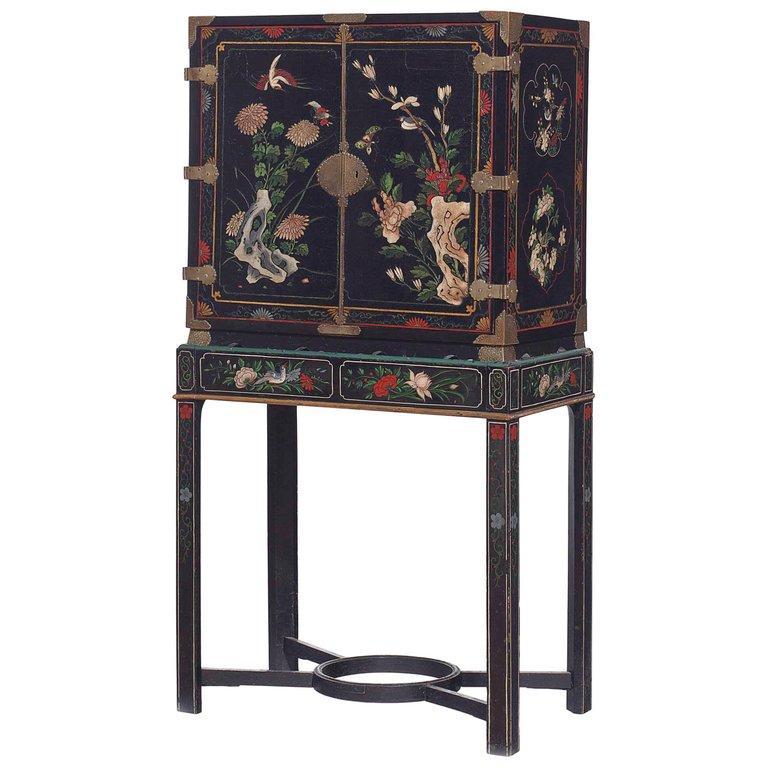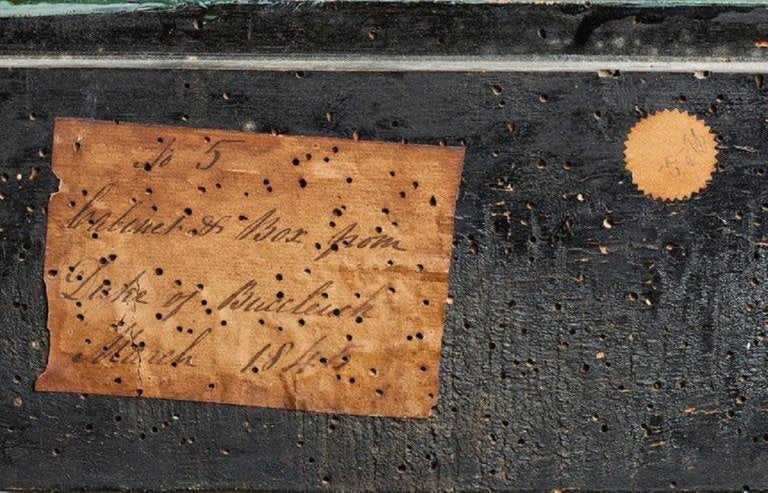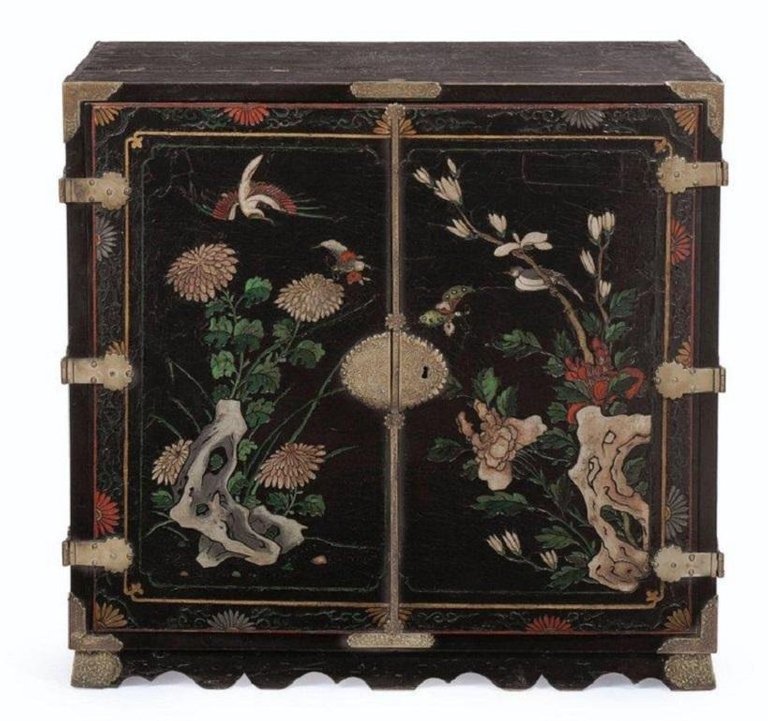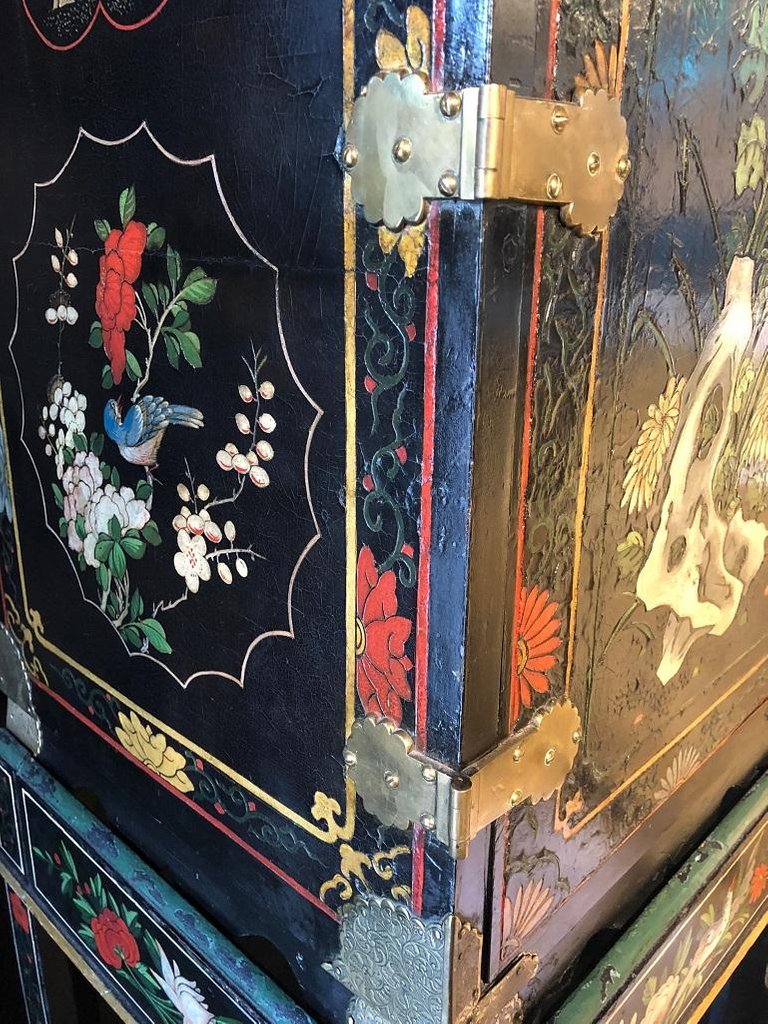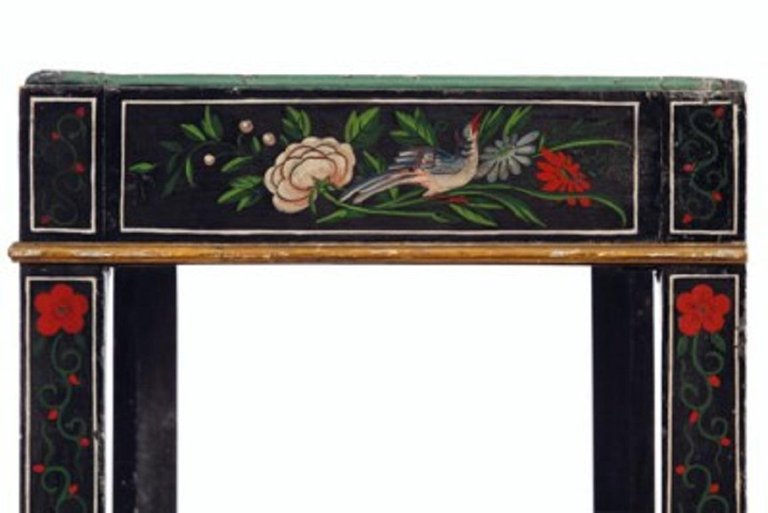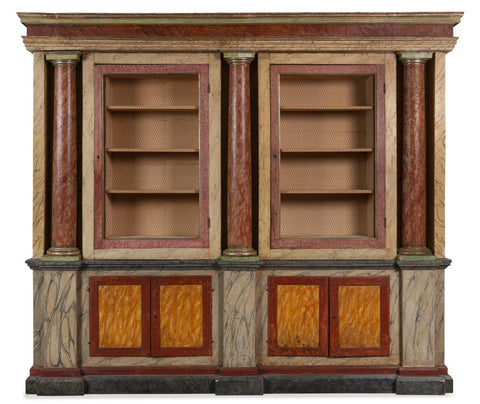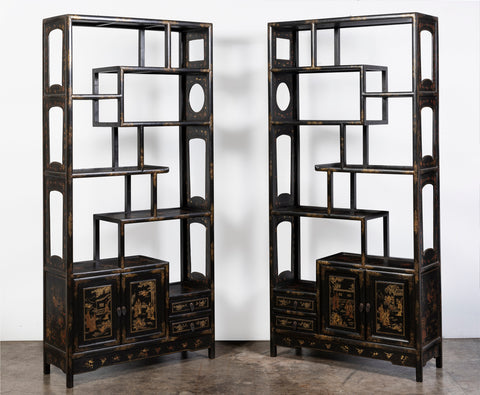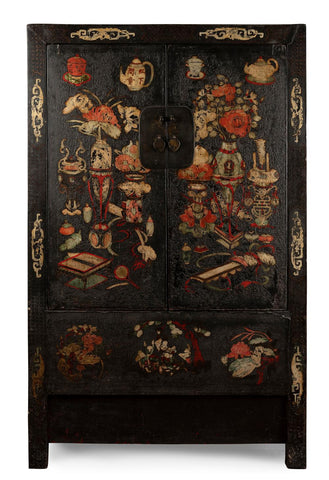An 18th Century Black Lacquered Brass and Chinese Coromandel Cabinet on Stand An 18th Century Black Lacquered Brass and Chinese Coromandel Cabinet on Stand
Call (03) 9509 0308 or send an enquiry grahamgeddes@grahamgeddesantiques.com
Dimensions: Height 160 cm, Width 84.5 cm, Depth 47.5 cm With label detail inscribed 'No.5/Cabinet & Box from/ Duke of Buccleuch/...
Dimensions: Height 160 cm, Width 84.5 cm, Depth 47.5 cm
With label detail inscribed 'No.5/Cabinet & Box from/ Duke of Buccleuch/ March 1845' The handwritten inventory labels dating to 1845 are those of Walter, 5th Duke of Buccleuch and the 7th Duke of Queensbury (d.1884). The Duke was heir to the spectacular properties of the Montagu, Douglas and Scott families including Drumlanrig, Dalkeith, Boughton, Bowhill, Adderbury, and Montagu house in London. However, the original commission for this rare 'Bantam' work cabinet has not yet been identified. A late 17th century Coromandel lacquer cabinet on stand bears the same Buccleuch inventory label (numbered 4). The latter was sold as part of collector Simon Sainsbury's celebrated sale, 'Simon Sainsbury: The Creation of an English Arcadia', Christies, London 18th June 2008. That cabinet and the present example both bear lacquer panel that date to the 1680s. The earlier Sainsbury cabinet also retains its late 17th century scroll legged stand. The present cabinet appears to date to the mid-18th century, by virtue of its more refined construction, but using earlier lacquer panels and imitating imported Chinese prototypes; the cabinet appears to be contemporary with the stand. It is interesting to note that while trade records show a decline in the importation of lacquer goods from the late 17th century, Asian lacquer was still considered a luxury good in the second quarter of the 18th century when this piece would have been made.
(A. Bowett, Early Georgian Furniture 1715-1740, 2009, pp.42-43). Various Buccleuch ancestors were partial to lacquer furnishings. In the 1670s, Ralph, 1st Duke of Montagu (d. 1709) endevoured to emulate the arts of France while serving as the Kings Ambassador Extraordinary to the Court of Louis XIV. As Keeper of the Kings Great Wardrobe from 1671 and 'Comptroller' of the Royal Tapestry Works at Mortlake from 1674, Monatgu's role was to supervise the purveyors of furnishing to the Royal households and to set the 'national' or 'court; style- and this catapulted his ambition to enlarge both Montagu House and Boughton House in the most fashionable taste expounded by the French court. The early inventories of Boughton reveal a plethora of lacquer furniture - including a Coromandel lacquer dressing table and mirror attributed to Gerrit Jensen. The 1718 inventory also records 'An India Cabinet ', Lady Queensbury's Room - An old India Cabinet' . A coromandel and parcel gilt kneehole dressing table on acanthus-wrapped scrolled legs gilt wood stand was very probably supplied by the same cabinet-maker as the Sainsbury cabinet on stand. Still in the collection of the Dukes of Buccleuch and Queensbury at Bowhill, Scotland, it is certainly conceivable that this is the 'buro made of Japan' referred to on James Morre's bill. Coromandel lacquer or 'Bantamwork', with its incised decoration, was made in Honan province in Northern China from the latter part of the Ming dynasty and exported to Europe from the end of the 17th Century through the East India Company's trading posts on the Coromandel Coast of India. The technique consisted in overlaying a base of wood with a series of increasingly fine white clays and fibrous grasses. Over this surface, lacquer was applied and polished before the design was incised and the hollowed out portions filled with color and gilt and finished with a clear lacquer to protect it. Although John Stalker and George Parker used the term 'Bantamwork', the contemporary laymen usually called it 'cuttwork', 'cutt Japan', or 'hollow burnt Japan'. Stalker and Parker discuss two types of 'Bantamwork' flat and incised. in their 'Treatise on Japanning and Varnishing of 1688, noting that it was 'done in colorus mix't with a gum water'. They also considered that it was 'almost obsolete, and out of fashion, out of use and neglected...' although admitted that 'it was very pretty and some are more fond of it, and prefer it to the other...' Provenance: Walter, 5th Duke of Buccleuch and 7th Duke of Queensberry (d.1884) by 1845. Thence by descent to the 8th Duke of Buccleuch and Queensbury, K.T.; sold Christie's London, 1986. Sotheby's London, 2001, Christie's New York, 2016.
Should you have any queries regarding this product, please feel free to get in touch grahamgeddes@grahamgeddesantiques.com, or call us at +61 3 9509 0308
Dimensions: Height 160 cm, Width 84.5 cm, Depth 47.5 cm
With label detail inscribed 'No.5/Cabinet & Box from/ Duke of Buccleuch/ March 1845' The handwritten inventory labels dating to 1845 are those of Walter, 5th Duke of Buccleuch and the 7th Duke of Queensbury (d.1884). The Duke was heir to the spectacular properties of the Montagu, Douglas and Scott families including Drumlanrig, Dalkeith, Boughton, Bowhill, Adderbury, and Montagu house in London. However, the original commission for this rare 'Bantam' work cabinet has not yet been identified. A late 17th century Coromandel lacquer cabinet on stand bears the same Buccleuch inventory label (numbered 4). The latter was sold as part of collector Simon Sainsbury's celebrated sale, 'Simon Sainsbury: The Creation of an English Arcadia', Christies, London 18th June 2008. That cabinet and the present example both bear lacquer panel that date to the 1680s. The earlier Sainsbury cabinet also retains its late 17th century scroll legged stand. The present cabinet appears to date to the mid-18th century, by virtue of its more refined construction, but using earlier lacquer panels and imitating imported Chinese prototypes; the cabinet appears to be contemporary with the stand. It is interesting to note that while trade records show a decline in the importation of lacquer goods from the late 17th century, Asian lacquer was still considered a luxury good in the second quarter of the 18th century when this piece would have been made.
(A. Bowett, Early Georgian Furniture 1715-1740, 2009, pp.42-43). Various Buccleuch ancestors were partial to lacquer furnishings. In the 1670s, Ralph, 1st Duke of Montagu (d. 1709) endevoured to emulate the arts of France while serving as the Kings Ambassador Extraordinary to the Court of Louis XIV. As Keeper of the Kings Great Wardrobe from 1671 and 'Comptroller' of the Royal Tapestry Works at Mortlake from 1674, Monatgu's role was to supervise the purveyors of furnishing to the Royal households and to set the 'national' or 'court; style- and this catapulted his ambition to enlarge both Montagu House and Boughton House in the most fashionable taste expounded by the French court. The early inventories of Boughton reveal a plethora of lacquer furniture - including a Coromandel lacquer dressing table and mirror attributed to Gerrit Jensen. The 1718 inventory also records 'An India Cabinet ', Lady Queensbury's Room - An old India Cabinet' . A coromandel and parcel gilt kneehole dressing table on acanthus-wrapped scrolled legs gilt wood stand was very probably supplied by the same cabinet-maker as the Sainsbury cabinet on stand. Still in the collection of the Dukes of Buccleuch and Queensbury at Bowhill, Scotland, it is certainly conceivable that this is the 'buro made of Japan' referred to on James Morre's bill. Coromandel lacquer or 'Bantamwork', with its incised decoration, was made in Honan province in Northern China from the latter part of the Ming dynasty and exported to Europe from the end of the 17th Century through the East India Company's trading posts on the Coromandel Coast of India. The technique consisted in overlaying a base of wood with a series of increasingly fine white clays and fibrous grasses. Over this surface, lacquer was applied and polished before the design was incised and the hollowed out portions filled with color and gilt and finished with a clear lacquer to protect it. Although John Stalker and George Parker used the term 'Bantamwork', the contemporary laymen usually called it 'cuttwork', 'cutt Japan', or 'hollow burnt Japan'. Stalker and Parker discuss two types of 'Bantamwork' flat and incised. in their 'Treatise on Japanning and Varnishing of 1688, noting that it was 'done in colorus mix't with a gum water'. They also considered that it was 'almost obsolete, and out of fashion, out of use and neglected...' although admitted that 'it was very pretty and some are more fond of it, and prefer it to the other...' Provenance: Walter, 5th Duke of Buccleuch and 7th Duke of Queensberry (d.1884) by 1845. Thence by descent to the 8th Duke of Buccleuch and Queensbury, K.T.; sold Christie's London, 1986. Sotheby's London, 2001, Christie's New York, 2016.
Should you have any queries regarding this product, please feel free to get in touch grahamgeddes@grahamgeddesantiques.com, or call us at +61 3 9509 0308

